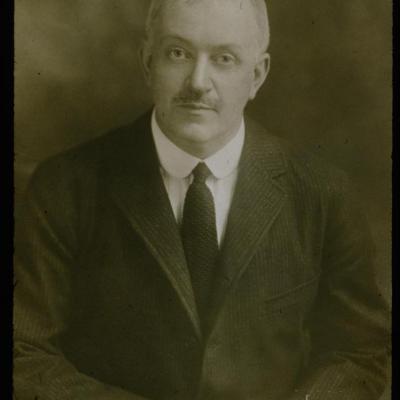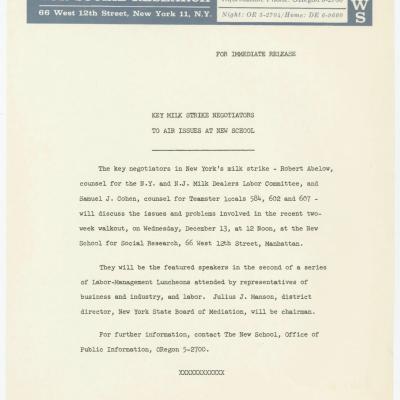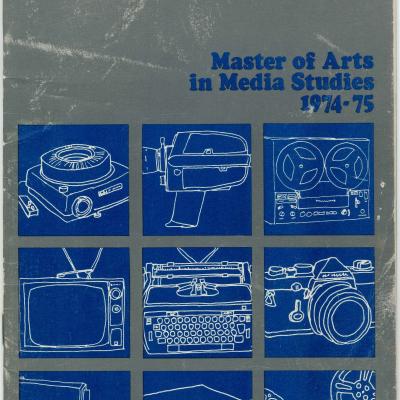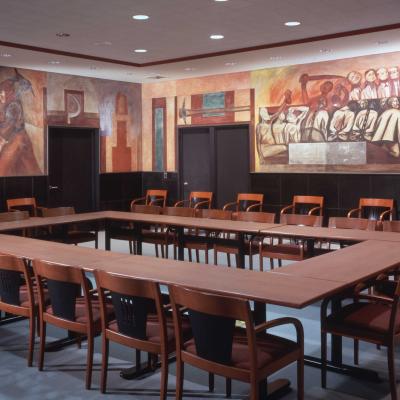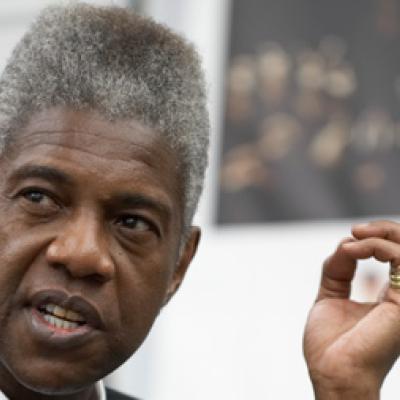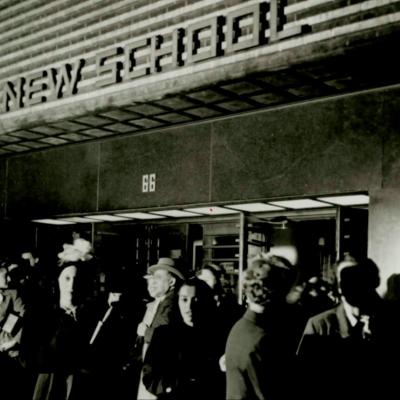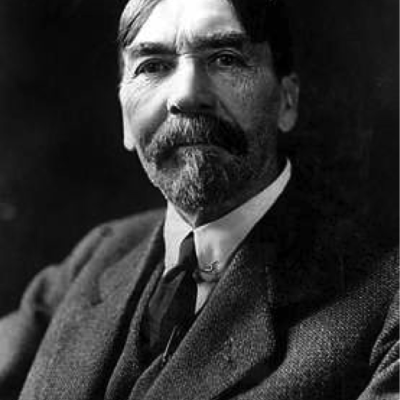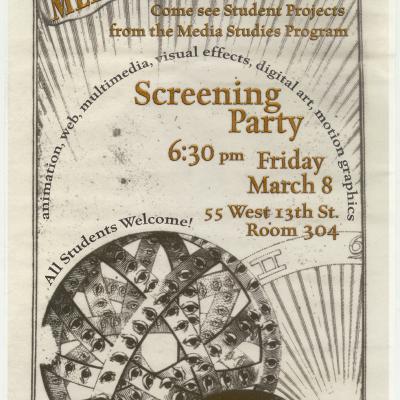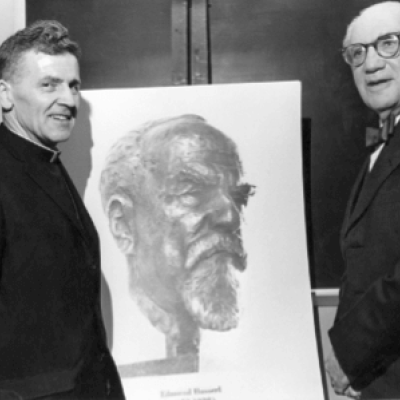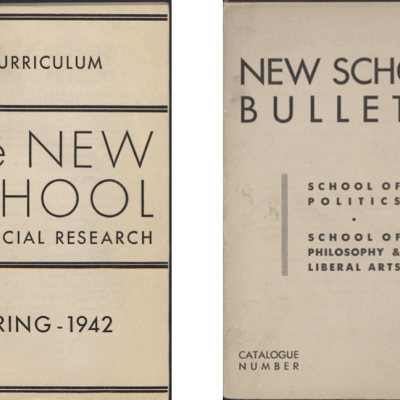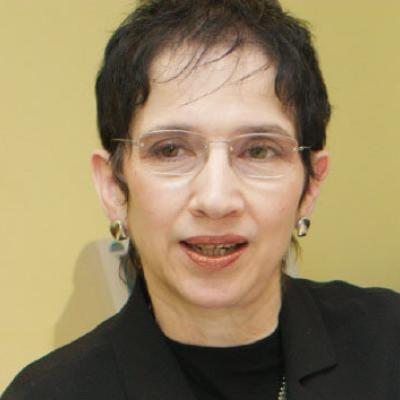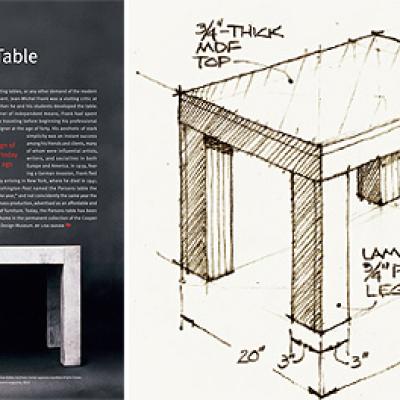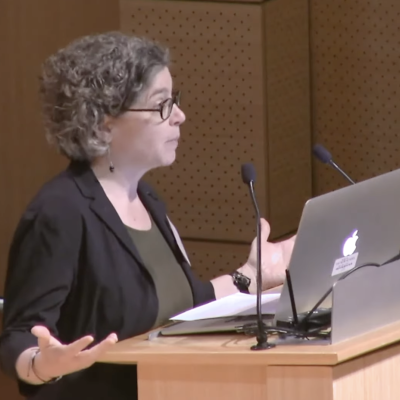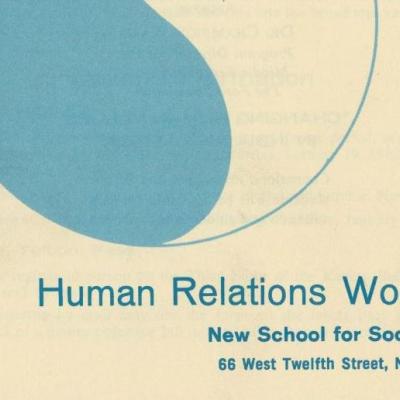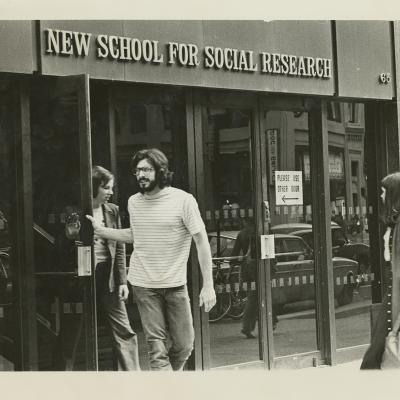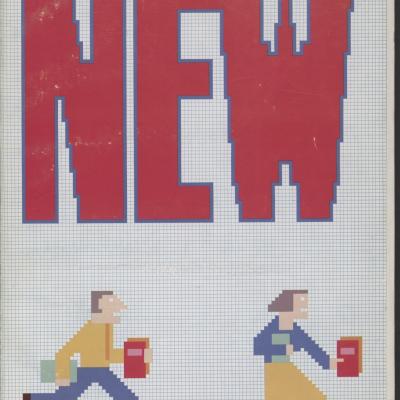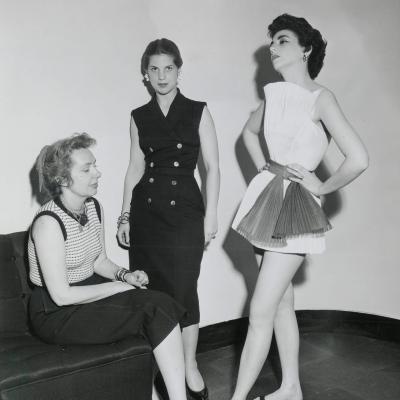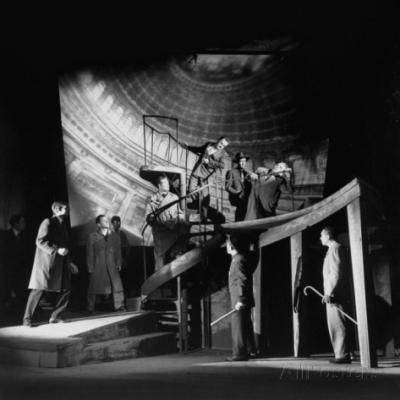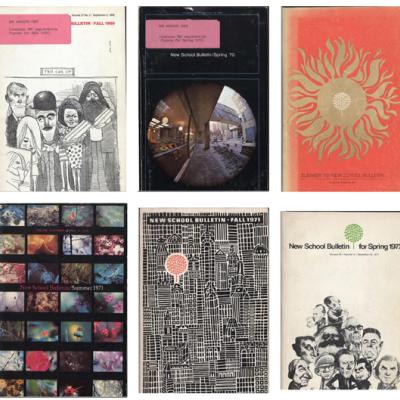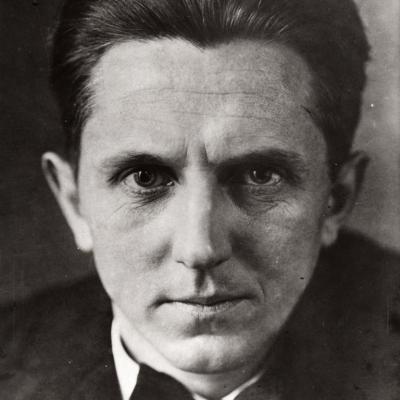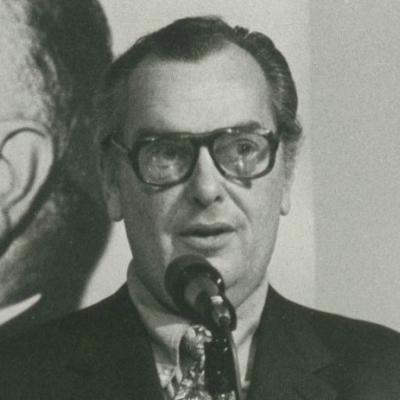Category: Curriculum
Frank Alvah Parsons
Frank Alvah Parsons was born April 1, 1866 in Chesterfield, Massachusetts. In 1901, after a period of European travel, Parsons moved to New York City where he pursued a degree in Art Education from Columbia University, graduating in 1905.
Labor at The New School
There is an ongoing history of efforts to build bridges between labor and management at the New School that lasted from 1919 through the 1970s.
Film and The New School: Passionate Provocateurs
Film studies and making at The New School are a match made in centennial history. The first U.S. university course in film history and criticism was offered at The New School in 1926 by producer, writer and editor Terry Ramsaye.
In Search of Popular Culture: The 60s Legacy
Sondra Farganis, chairwoman of the social sciences at the New School for Social Research in New York City, supports the importance of popular culture as a course of study. She also believes it belongs in the sociology or history departments.
The Guardian of New York’s Living Heritage: Panel Oversees Historic Districts with a Loving Eye
When Gerald and Beatrice Banu sought approval for refurbishing the cast iron balustrades that grace the front of their 114 year-old Greenwich Village brownstone, the New York City's Landmarks Preservation Commission quickly gave its approval.
A New Vision
The old building at 65 5th Avenue was awkward, badly lit, uninspiring, and ultimately, unsustainable. Of course the old building was never intended to serve as a functional academic facility.
George Pitts
Multi-talented George Pitts taught photography at Parsons for two decades, from 1998 until his untimely death in 2017. He came to Parsons as the revolutionary, founding Director of Photography at Vibe magazine, where he worked from 1993 to 2004.
History of the Journalism Program at The New School

Thorstein Veblen
Thorstein Veblen’s educational philosophy and book The Higher Learning in America deeply influenced the unique character of the New School for Social Research in the first discussions about creating an adult education institution in 1918.
Media Studies at The New School
In Spring 2014, Shannon Mattern’s graduate course in Media Studies, “Digital Archives + Institutional Memory,” investigated the history of Media Studies at the New School. The students created a Scalar-based online exhibition here.
The Archives of Edmund Husserl in the United States
By the late 1930s, the Graduate Faculty of Political and Social Science at the New School for Social Research was a center for the study of Husserlian phenomenology in United States.
The New School Catalogs over the Years
A collage of the covers of the New School catalogs over the years.
Sondra Farganis
“Breaking the rules, taking risks comes at a price,” says Sondra Farganis, Director Emeritus of both the Vera List Center for Art and Politics (VLC) and the Wolfson Center for National Affairs at the New School (WC).
Bea Banu
You walk into her office on the ninth floor of Joseph Urban’s Modernist architectural masterpiece, Alvin Johnson/J.M. Kaplan Hall, at 66 W. 12th St. She gives you a warm smile with a firm, friendly handshake.
The Parsons Table
The Parsons table is not a physical object but an idea, the platonic ideal of a table, characterized by a simple form, unadorned, adaptable to any material, with legs as wide as the tabletop is deep.
A New School Minute (or Two)
On Alumni Day on May 11, 2013, the Alumni Office asked twenty faculty and staff to give a 60-second lecture. Tasked with the topic of “New School History,” it was quite a challenge!
The Human Relations Center
The Human Relations Center began in 1951 at the behest of Clara Mayer, the infamous right-hand woman of Alvin Johnson, the long-time director of the school.
Growing Up at The New School in the 1960s and ’70s
The adult undergraduate division—now known as the New School for Public Engagement—has always been the New School’s “first responder” to cultural trends, and in this era it both reflected the activism and enthusiasm of the 1960s and channeled radical, even potentially nihilistic impulses through
The Founding, 1919
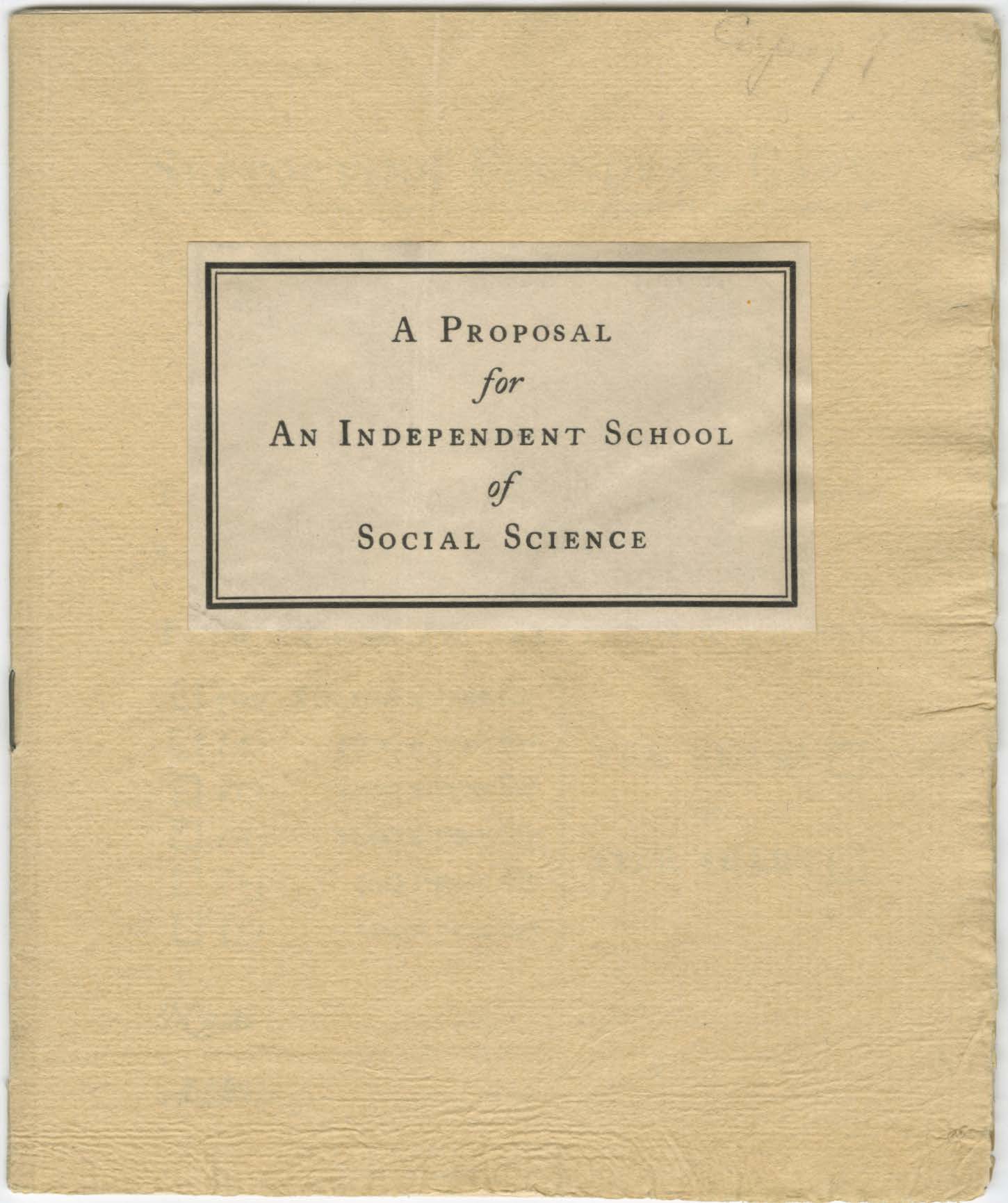
New School Bulletins
History of the Bachelors Program
On May 19, 1944, the Board of Regents granted the New School the ability to give bachelor’s degrees and the school aimed to attract adult students starting or finishing their degrees. The school was poised to take advantage of the recently passed G.I.
A Brief History of Fashion Design at Parsons from 1950
Throughout the history of the Parsons fashion department from 1950-present there have been many important events that have helped shape the fashion department into the prestigious program that it is today.
The Spaces of the Dramatic Workshop
When the Dramatic Workshop separated from the New School, one of its main gripes was the lack of space. The records from 1943 show 20 full time students. This grew to 50 students by 1944 and 310 in 1946. Then there were the evening students – 440 in 1944, which grew steadily to 1,070 by 1947.
The Arts Curriculum, 1945-1960
The New School Bulletin 1945-1946
Art courses ranged from general, international art history, to
The Dramatic Workshop
In January 1940, Erwin Piscator, a German theater director, launched the Dramatic Workshop at the New School for Social Research. In its first semester the program had approximately twenty students for acting and twenty-five for directing.
Allen Austill
I never had the pleasure of knowing Allen Austill directly. I heard him spoken of by others, usually in high praise.
